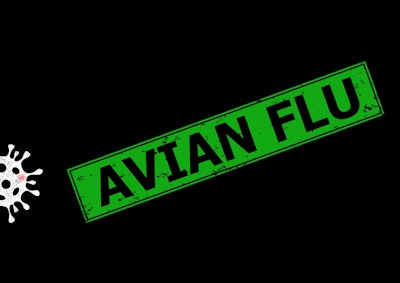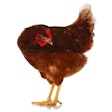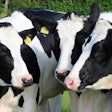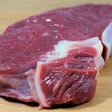
Despite an apparent easing in the number of new cases of highly pathogenic avian influenza (HPAI) in domestic birds in Europe, widespread mortalities continue to be reported in wild birds. In Norway, the virus was detected following mass mortality of seabirds. Among wild mammals, first infections have been confirmed in Northern Ireland.
Since the start of 2023, there have been 385 outbreaks of HPAI in commercial poultry in 21 European Union (EU) member states and neighboring countries. This is according to the Animal Disease Information System by the European Commission (EC; dated August 4).
This source includes two regions not belonging to the continent of Europe. Totals include two outbreaks in Turkey (Tűrkiye) as well as one in the French overseas territory of Reunion, located in the western Indian Ocean.
Of the EC’s total, the country with the most outbreaks — now with 152 — is France. Next comes Hungary with 79 outbreaks to date. The only change from the previous edition dated July 22 was one further outbreak in The Netherlands.
For comparison, 24 nations registered a total of 2,321 outbreaks in poultry through this system during 2022.
With the exception of Northern Ireland, the disease situation in the United Kingdom (U.K.) is not covered by the EC System.
However, in recent days, three further outbreaks in Scotland, according to the Scottish Government. Affected were one location in each of Aberdeenshire, the Highlands region, and the Isle of Lewis. At each premises, presence of the H5N1 serotype of the HPAI virus was confirmed.
In France, the number of outbreaks in poultry remains unchanged at 402 since August 1 last year, according to the agriculture ministry.
At the end of July, the ministry launched an initiative to investigate aspects of disease control specific to free-range and organic farms. While HPAI is not mentioned as a particular threat to poultry, the main focus will be on how to achieve biosecurity for these premises.
Over the past two weeks, two European states have officially declared that HPAI has been “resolved” in poultry in defined areas.
According to notifications to the World Organisation for Animal Health (WOAH), this applies to the Gotland region of Sweden, and to Baden-Wurttemberg and Mecklenburg-West Pomerania in Germany.
Only U.K. registers new cases in captive birds
So far in 2023, 13 countries have together registered a total of 87 outbreaks of HPAI in captive birds through the EC’s system (as of August 4). This total — covering backyard poultry, zoos and similar premises — has not changed since the previous report dated July 22.
Recording the most outbreaks in this category has been France (now with a total of 30), followed by Germany (29), and Belgium (11). Each of the other 10 nations in the regions has registered between and four outbreaks.
In mid-July, the U.K. animal health agency notified WOAH about an HPAI outbreak linked to the H5N1 virus variant on the Channel Island of Jersey. Affected was a small group described as “non-poultry domestic birds.” This British Crown dependency had been free of HPAI since October of 2022.
Spread of HPAI in Europe's wild birds continues
Over a two-week period up to August 4, 14 European states officially recorded one or more cases of HPAI in their respective wild bird populations.
Up to that date, 3,170 outbreaks had been registered in 27 states of the European Union (EU) and its neighbors, according to the EC System. The total was 115 higher than in the previous update dated July 22.
For comparison, 33 nations registered a total of 3,245 outbreaks in wild birds with the EC’s system during the whole of 2022.
Germany continues to be the state with the most outbreaks (1,037 for the year to date). Next come France (393), and the Netherlands (355).
For each of these countries, the total has risen since the EC’s previous update. Also registering more cases over this period were Austria, Belgium, Denmark, Estonia, Finland, the Irish Republic, Latvia, Northern Ireland, Norway, Spain, and Sweden.
In Norway, an outbreak recently reported to WOAH involved mass mortality in wild birds. Affected were around 12,000 kittiwakes that died at one location in the northern county of Troms and Finnemark.
Also reporting new cases to the Organisation over the past two weeks were Italy and the U.K.
Finland, U.K. confirm new cases in mammals
One further outbreak linked to the H5N1 HPAI virus have been reported by Finnish authorities to WOAH.
Bringing the nation’s total since June to 20 was another fur farm in the same region. Six of the 25,000 Arctic foxes at premises died at the end of July.
At the start of this month, the agriculture department, DAERA reported Northern Ireland’s first ever confirmed infections in animals other than birds. Two fox cub carcasses found in County Antrim had tested positive for the H5N1 virus serotype. The body advised pet owners to keep their dogs on leads, and their animals away from dead or sick wild species.
View our continuing coverage of the global avian influenza situation.


















